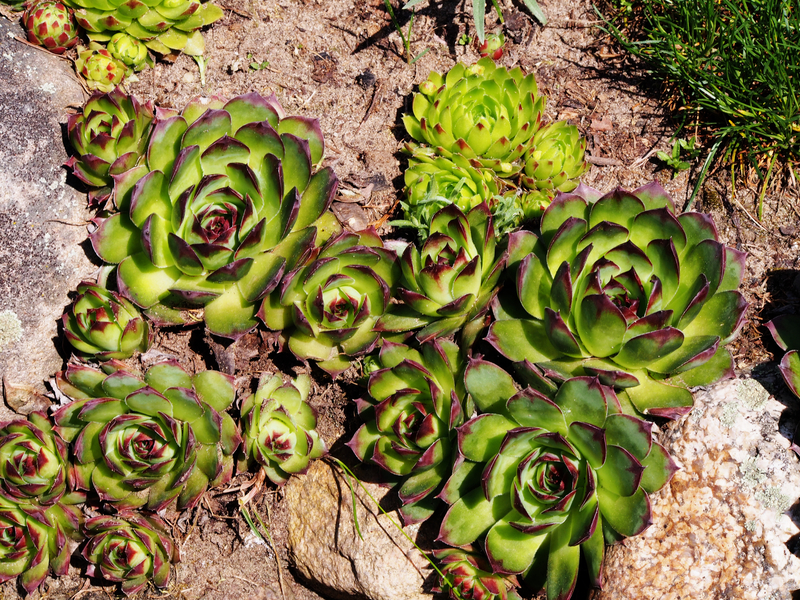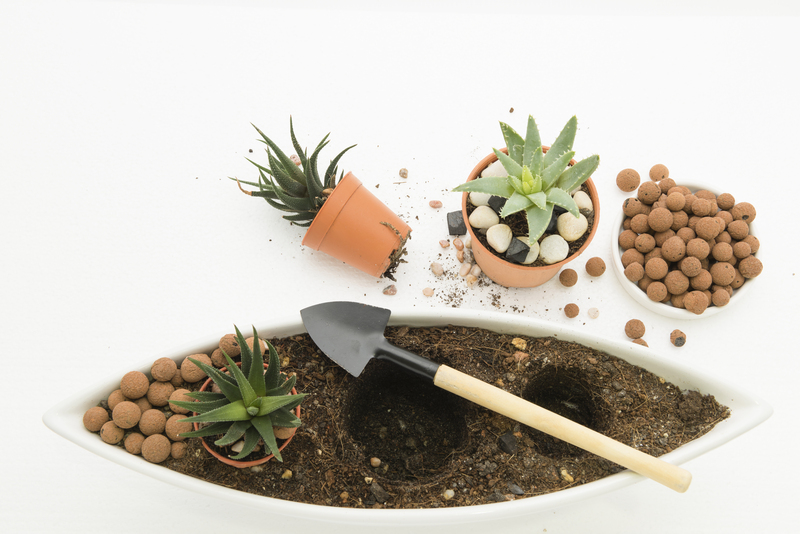Winter Is Coming: Prepare Your Garden Plants for Survival
Posted on 05/06/2025
Winter Is Coming: Prepare Your Garden Plants for Survival
When temperatures begin to plummet and frost snaps at your garden, it can seem like the only option is to wave goodbye to your beloved greenery until spring. But with the right strategies, your garden can thrive even as winter approaches. This comprehensive guide will show you how to prepare your garden plants for winter survival, protect your investment, and even set yourself up for an abundantly blooming spring.
Understanding the Challenge: Why Winter Threatens Garden Plants
Winter brings a unique set of obstacles for gardeners. Freezing temperatures, biting winds, heavy snow, and reduced sunlight can all stress garden plants and even kill those not made for cold climates. By understanding the main threats, you can take tailored actions for winter garden preparation.
- Frost and Freezing Temperatures: These can burst cell walls in plants, leading to limp, blackened foliage and dead branches.
- Snow Weight: Heavy snow can snap branches and crush smaller shrubs or perennials.
- Desiccation: Dry winter winds can pull moisture from evergreens and tender plants faster than roots can replace it.
- Soil Heaving: Repeated freezing and thawing push roots up and out of the ground.
- Reduced Daylight: Diminished photosynthesis means less energy for plants to draw on during stress.
Given these risks, it's critical to learn the best ways to get your garden ready for winter.

1. Know Your Hardiness Zone
Before you start, identify your USDA Plant Hardiness Zone. This helps determine which garden plants need extra protection in winter and which are likely to survive without intervention. Knowing your zone also guides plant selection for future gardening seasons.
How to Find Your Hardiness Zone
- Visit the USDA Hardiness Zone Map
- Input your zip code for precise recommendations
- Choose perennials rated for your zone or lower for best overwintering survival
2. Clean Up Your Garden: Remove Disease and Debris
Fall and early winter are ideal times to tidy up the garden. Remove spent annuals, dead leaves, and fallen fruit to minimize overwintering pests and diseases. This simple practice can prevent headaches come spring and give your garden a jump-start on the next growing season.
- Pull up and discard annuals (do not compost diseased material!)
- Rake up all fallen leaves and fruit to avoid fungal spores and insect larvae hibernation
- Cut back dead or dying perennial foliage to reduce hiding spots for pathogens
Note:
If you have ornamental grasses or perennials that provide winter interest or shelter for wildlife, consider leaving some standing until late winter.
3. Mulching: The Secret Weapon for Winter Plant Survival
One of the most powerful tools in your winter garden arsenal is mulch. Applying a 2-4 inch layer of organic mulch around garden plants helps to:
- Regulate soil temperature
- Prevent soil heaving
- Insulate plant roots
- Conserve moisture
- Add organic matter as it decomposes
Best Mulches for Overwintering
- Shredded leaves: Free, abundant, and slow to mat down
- Wood chips or bark mulch: Good insulation, attractive in garden beds
- Pine needles: Ideal for acid-loving plants
- Straw: Perfect for vegetable gardens and tender perennials
Tip: Avoid piling mulch against trunks or stems--this can cause rot or invite rodents.
4. Water Wisely: Hydrate Before a Freeze
As temperatures drop, don't forget one of the best things you can do to safeguard your garden plants for winter: water deeply in late fall.
- Sufficient moisture helps plants withstand desiccating winter winds
- Helps evergreens (including conifers and broadleaf species) avoid leaf scorch
- Permits roots to draw up last-minute nutrients before freeze-up
Important: Avoid watering if your ground is already frozen. Water on a sunny day when temperatures are above freezing.
5. Protect Sensitive and Tender Plants
Not all garden plants have the same cold tolerance. For marginally hardy or non-hardy perennials, shrubs, and young trees, take extra steps:
Insulate with Burlap or Frost Cloth
- Wrap tender evergreens or roses loosely in burlap to shield against wind and sunscald
- Use frost blankets or row covers for late-blooming annuals or small vegetable plots
Container Plants: Bring Them In
- Move pots of tender herbs, tropicals, or succulents indoors
- If not possible, cluster pots in a sheltered location and insulate with straw or mulch
Construct Protective Structures
- Use cloches or cold frames for young seedlings and winter vegetables
- Build simple windbreaks from stakes and burlap or old blankets
6. Prune with Purpose: But Not Every Plant
Late fall is a suitable time to prune certain trees and shrubs for winter resilience, but timing matters.
- Prune diseased, damaged, or dead wood to prevent pathogens overwintering
- Avoid heavy pruning of spring-flowering shrubs (e.g., lilac, forsythia) until after bloom; pruning now removes flower buds
- For fruit trees, wait until dormancy for major pruning to minimize disease risk
What Not to Prune in Fall
- Roses (in cold climates) - Wait until spring to avoid dieback
- Early spring bloomers (like hydrangea macrophylla) - Pruning now removes next year's flowers
Remember: Always use clean, sharp tools to minimize plant stress and disease transmission.
7. Take Care of Your Lawn
A winter-ready garden isn't just about trees and perennials--your lawn also needs preparation for winter survival:
- Rake up leaves to prevent suffocation and fungal diseases
- Aerate compacted soils for better water absorption
- Apply a slow-release, low-nitrogen fertilizer for overwintering
- Mow grass for the last time a little shorter, but never scalp it
8. Plan Ahead for Wildlife and Pollinators
Beneficial insects and birds need winter habitats too! While prepping your garden, leave seed heads and select perennials standing to provide:
- Food (seeds for birds, dried stems for bees and butterflies)
- Shelter for overwintering insect larvae and small animals
A well-balanced garden supports vibrant life come spring and helps maintain natural pest control cycles.
9. Tools and Equipment: Winterize for Longevity
Don't neglect your garden tools! As you prepare your garden for winter, prolong the life of your equipment:
- Clean and dry all hand tools to prevent rust
- Sharpen blades and oil moving parts
- Drain and store hoses indoors if possible
- Clean birdbaths, pots, and containers; store them upside down
10. Plan for an Early Spring Start
Winter isn't just about defense--it's a great time to dream and plan! Use this downtime to design next year's garden:
- Order seeds and bulbs early
- Draw up crop rotations and companion planting pairs
- Evaluate what worked this year and note what to change

Common Winter Protection FAQs
Should I cut perennials back to the ground in fall?
Not always. Some perennials benefit from being left standing as insulation or to provide food/shelter for wildlife. Plants with disease or severe damage should be cut back.
How do I keep container plants alive during winter?
Move to a sheltered location (garage, basement, indoors) if possible. Insulate the pots, cluster together, and do not let soil dry out completely or become waterlogged.
When is the best time to apply winter mulch?
After the first hard frost--this allows soil to cool and avoids trapping pests. Apply mulch 2-4 inches thick around root zones.
Can I plant anything in fall for winter color?
Yes! Hardy pansies, ornamental kale, winter heather, and hellebores offer cheerful color even during coldest months.
Final Thoughts: Thriving Despite the Freeze
Preparing your garden and plants for winter survival isn't just about enduring the cold--it's about fostering a landscape that will flourish anew come spring. By cleaning, mulching, watering, protecting, and planning ahead, you'll ensure your garden's health and beauty for years to come. Remember: winter is not just an ending--it's the beginning of your garden's next chapter.
Take a little time now to get your garden ready for winter, and you'll enjoy the peace of mind and the reward of a richly blooming, resilient garden in the seasons ahead.
Related Resources:
- Winterizing Your Garden: Gardeners Supply
- RHS: How to Protect Your Garden in Winter
- Old Farmer's Almanac: Garden Prep for Winter
Winter is coming--prepare your garden for survival, and witness a thriving landscape when the snow finally melts!

